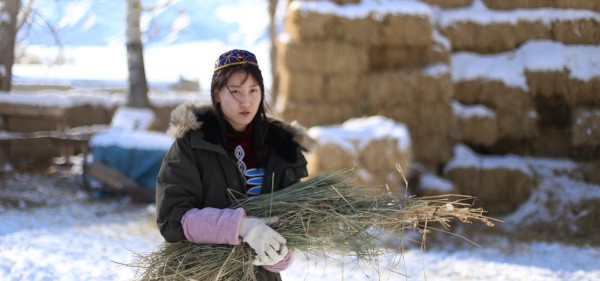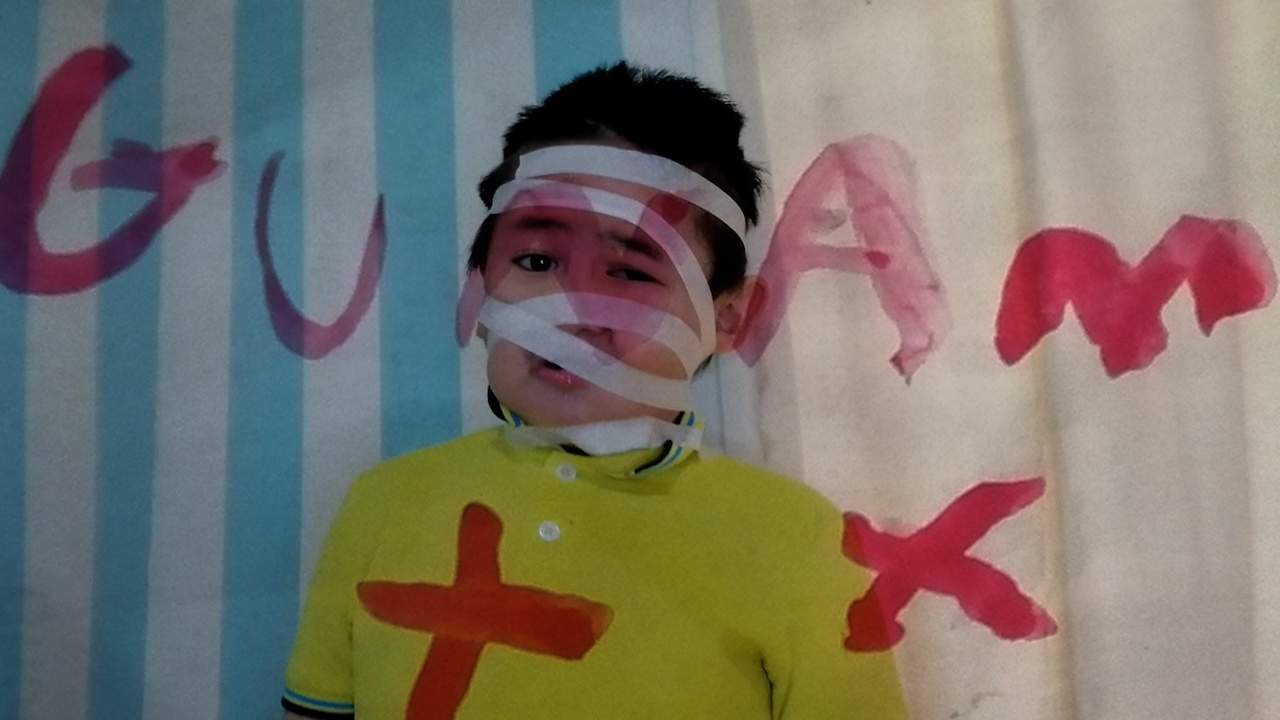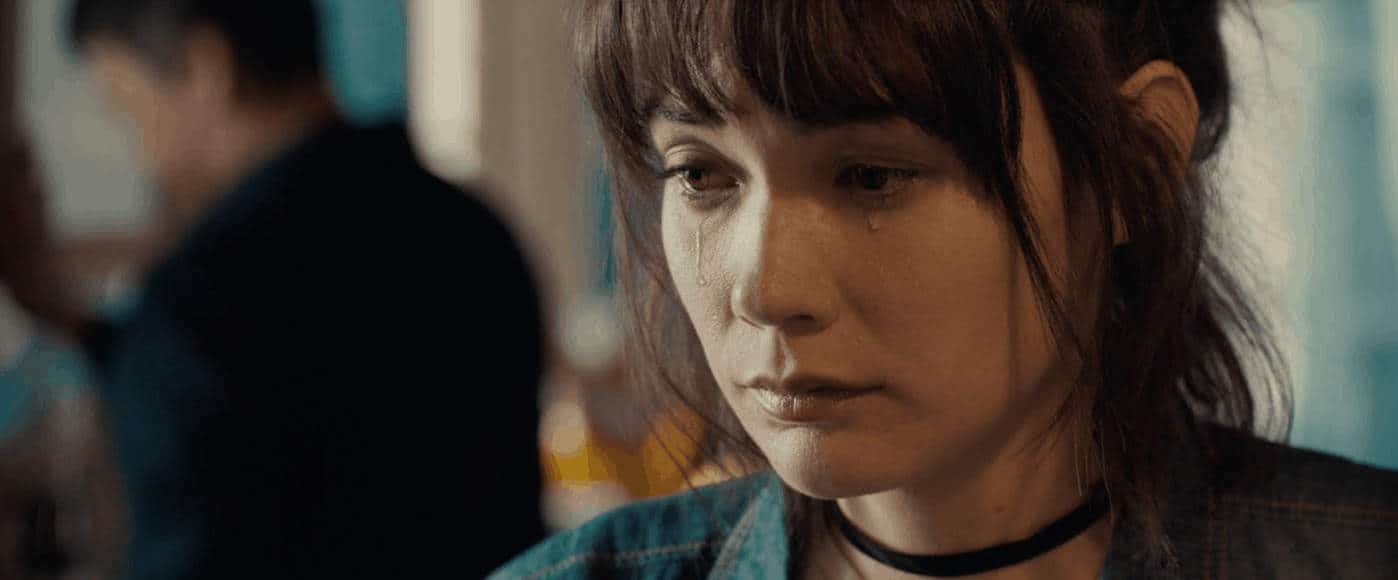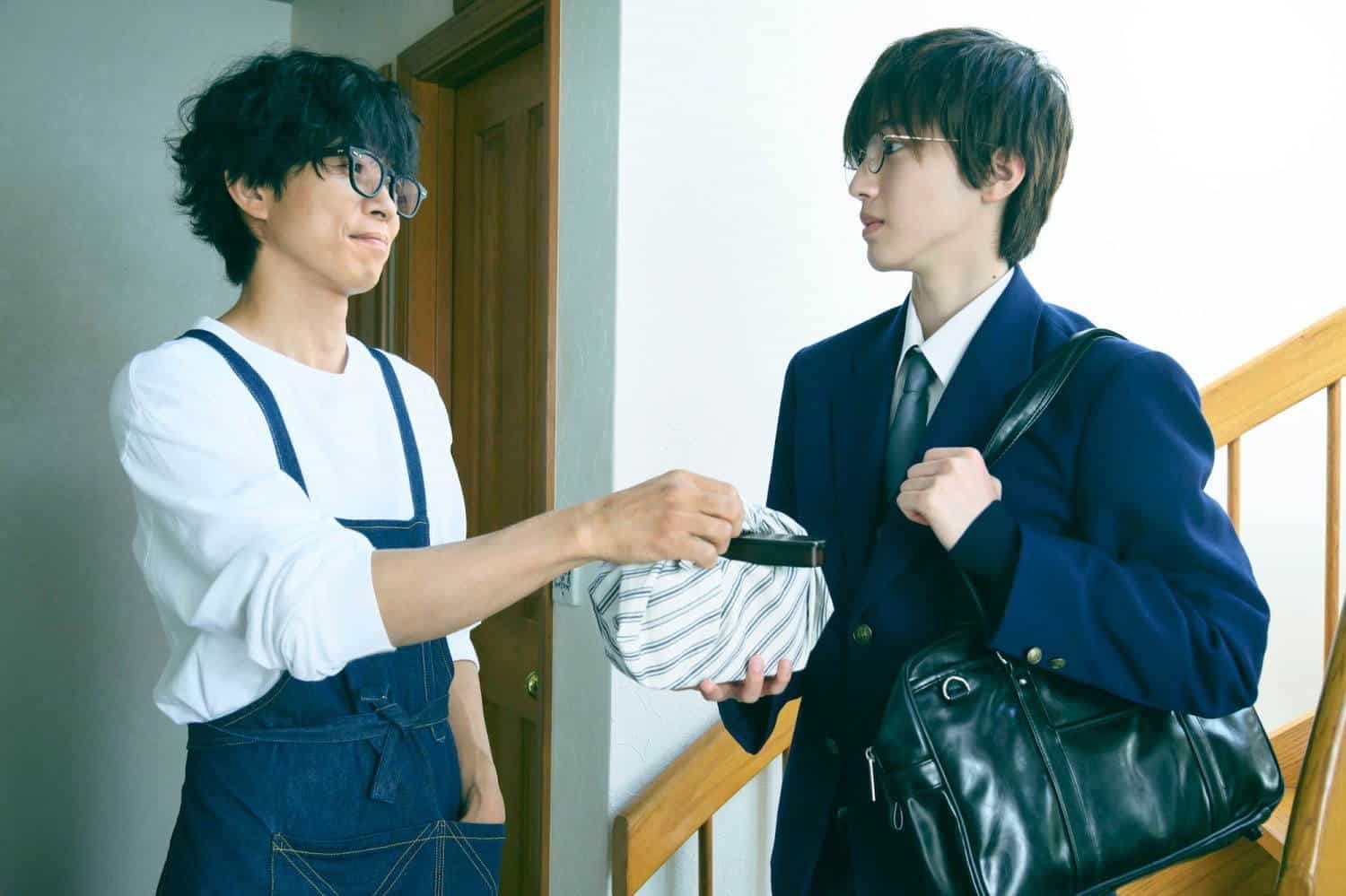As one of seven entries, “The Hunters in the Snow” represented current Chinese filmmaking at the Interfilm International Short Film Festival. In the special program “China New Talent” Binghan Lin and Chuer Qin presented their twenty-minute film, which oscillates between documentary and feature film.
In a rural, rustic village people live in harmony with nature. There is a lot of snow here and it seems like life is far less comfortable than in an urban setting. In any case, it gets very cold here. People are wrapped in thick clothes and their sheep wear so much wool that they are out of shape. The experiences and calm movements of one girl, gently driving her sheep in one direction, contrast with the impatient and rather excited gestures of a group of tourists watching her.
Another local girl leads the onlookers. These seem almost like another flock of sheep, one might think. The scene when they all of them take out their cameras and start snapping has a surrealistic character. The enthusiasm on their faces and the indifference on that of the girl come out perfectly.
“The Hunters in the Snow” essentially has two different levels. Besides the scene with the tourists, there is an interaction between a young photographer and a local. During their conversation in the car, two completely different views of life collide in a short time. For one, photography is a profession, for the other a hobby at most.
In their film, Binghan Lin and Chuer Qin speak of opposites, the contrasts between rural and urban. Tradition and modernity collide and show how compromises may look like to unite both. The title of the film “The Hunters in the Snow” probably refers to the tourists. They are looking for the authentic experience, pointing their camera lenses at the prey they want to “shoot”.
The film explains little. It remains laconic about its specific motifs and finds no precise unity between the two main parts. The images come from both static shots and moving handheld camera shots. At several points, the reduction of means results in the film functioning like a documentary. It's most of all nature that is shown in a memorable way, revealing its beauty.















